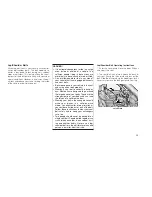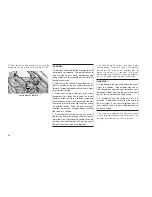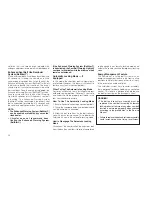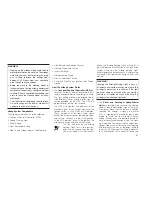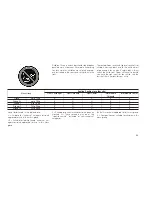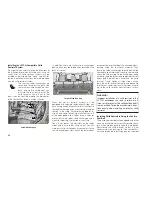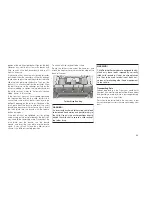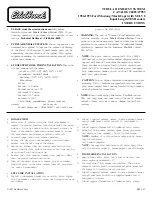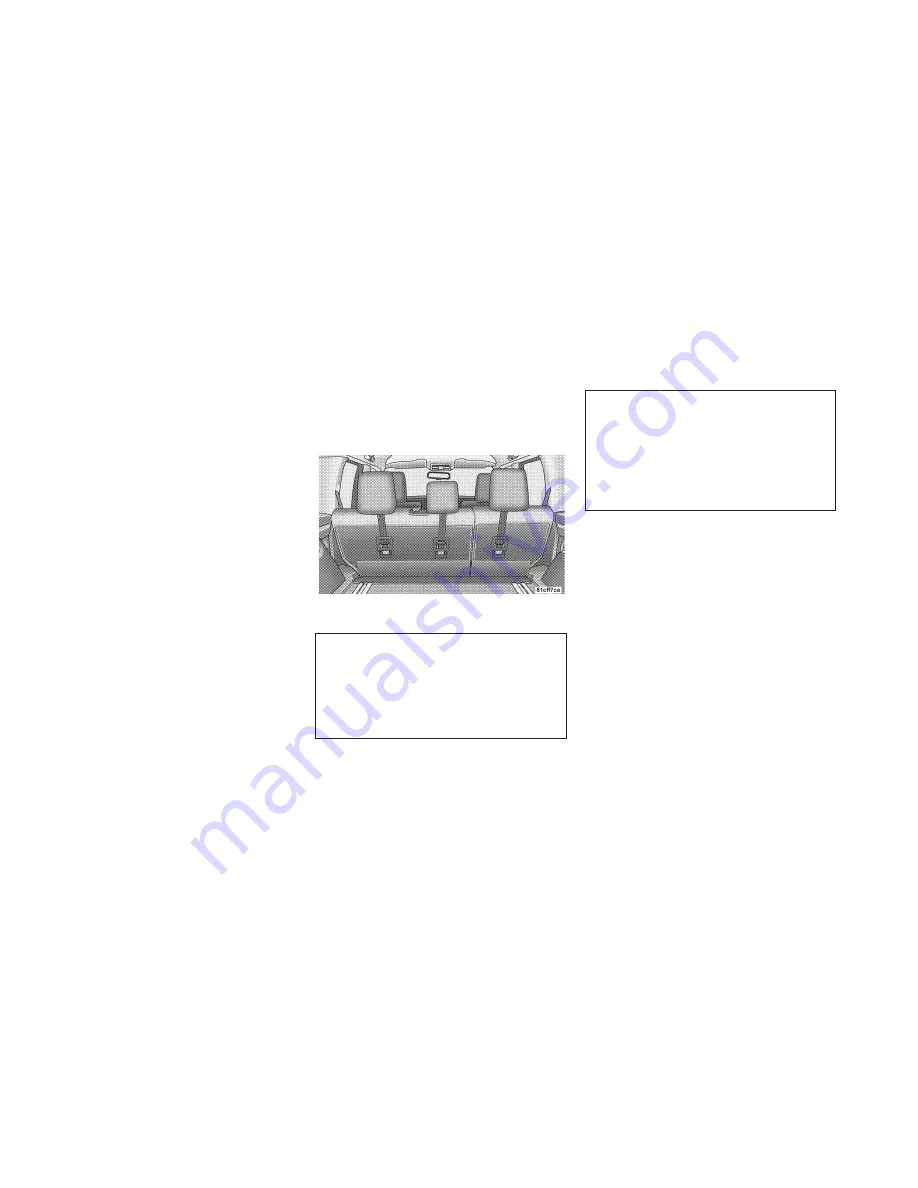
portion of the lap/shoulder belt will tighten the belt.
However, any seat belt system may loosen with
time, so check the belt occasionally, and pull it
tight if necessary.
If the seat belt has an automatic locking retractor,
pull the belt from the retractor until there is enough
to allow you to pass through the child restraint and
slide the latch plate into the buckle. Then, pull the
belt until it is all extracted from the retractor. Allow
the belt to return to the retractor, pulling on the
excess webbing to tighten the lap portion about
the child restraint. Refer to “Automatic Locking
Mode” earlier in this section.
In the rear seat, you may have trouble tightening
the lap/shoulder belt on the child restraint be-
cause the buckle or latch plate is too close to the
belt path opening on the restraint. Disconnect the
latch plate from the buckle and twist the short
buckle-end belt several times to shorten it. Insert
the latch plate into the buckle with the release
button facing out.
If the belt still can’t be tightened, or if by pulling
and pushing on the restraint loosens the belt, you
may need to do something more. Disconnect the
latch plate from the buckle, turn the buckle
around, and insert the latch plate into the buckle
again. If you still can’t make the child restraint
secure, try a different seating position.
To attach a child restraint tether strap:
Route the tether strap under the headrest and
attach the hook to the tether anchor located on the
back of the seat.
WARNING!
An incorrectly anchored tether strap could lead
to increased head motion and possible injury to
the child. Use only the anchor positions directly
behind the child seat to secure a child restraint
top tether strap.
WARNING!
Child Restraint Anchorages are designed to with-
stand only those loads imposed by correctly
fitted child restraints. Under no circumstances
are they to be used for adult seat belts, har-
nesses or for attaching other items or equipment
to the vehicle.
Transporting Pets
Airbags deploying in the front seat could harm
your pet. An unrestrained pet will be thrown about
and possibly injured, or injure a passenger during
panic braking or in a collision.
Pets should be restrained in the rear seat in pet
harnesses or pet carriers that are secured by seat
belts.
Tether Strap Routing
39
Summary of Contents for Cherokee 2009
Page 1: ......
Page 2: ......
Page 3: ......
Page 5: ...2...
Page 9: ...6...
Page 11: ...8...
Page 15: ......
Page 45: ...42...
Page 50: ...Rear Window Defroster If Equipped 89 ROOF LUGGAGE RACK IF EQUIPPED 90 47...
Page 51: ......
Page 63: ...60...
Page 64: ...61...
Page 65: ...62...
Page 97: ...INSTRUMENT CLUSTER 94...
Page 106: ...Compass Variance Map 103...
Page 111: ...Compass Variance Map 108...
Page 116: ......
Page 120: ...117...
Page 123: ...Control Setting Suggestions for Various Weather Conditions 120...
Page 147: ......
Page 159: ......
Page 162: ......
Page 175: ...172...
Page 179: ......
Page 210: ...9 IF YOU NEED CONSUMER ASSISTANCE IF YOU NEED ASSISTANCE 208 207...
Page 212: ...209...
Page 213: ...210...
Page 214: ...10 INDEX 211...

